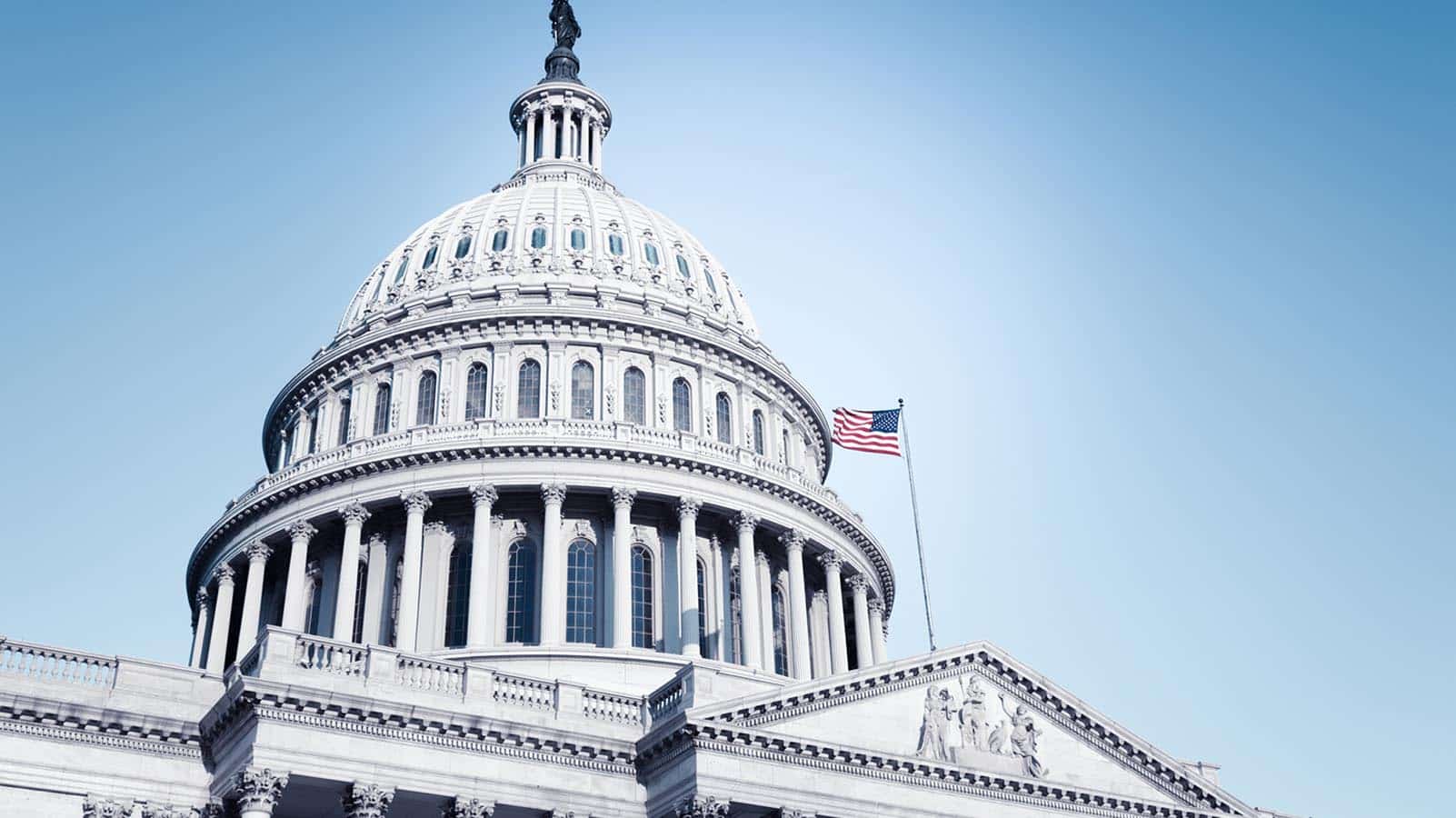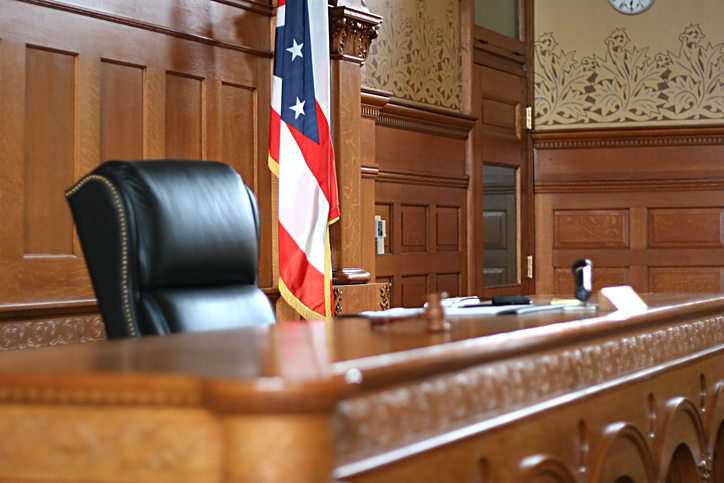What is Qui Tam? A Guide for Whistleblowers
Qui tam is a provisions of the False Claims Act (FCA) allowing whistleblowers to file a lawsuit on behalf of the US government and receive a share of the recovered funds. Fraud may includes abuse of disaster relief loans, over billing, kickbacks, false statements, and upcoding in healthcare, among many others.
Updated
May 10, 2025

Qui Tam in a Nutshell
Qui tam lawsuits empower whistleblowers to file suit on the government’s behalf for false or fraudulent claims submitted to receive payment. These lawsuits can cover a wide range of fraud, from healthcare billing irregularities to defense contractor overcharges, wherever taxpayer dollars are involved. Common frauds include upcoding, kickbacks, illegal drug marketing and other Medicare frauds and abuse.
The FCA is considered one of the strongest whistleblower laws, having paid over $7.8 billion in awards since 1986, according to the statistics from 2023. Fiscal year 2024, which ended on September 30, 2024, marks a record year for the number of qui tam suits filed at 979. The total reported settlements and judgments from these suits and others from years prior exceeded $2.4 billion.
The success of the False Claims Act (FCA) and its qui tam provision has inspired numerous whistleblower programs, both at the federal and state levels. This effectiveness in prosecuting government fraudsters has led to the adoption of similar models in other jurisdictions. Furthermore, several states have enacted their own state False Claims Acts to combat fraud, misconduct, and abuse related to state contracts and funding, mirroring the federal model’s success in addressing issues like Medicare and Medicaid fraud.
If you’re seeking to blow the whistle on a fraud that involves government funding, continue reading our qui tam guide to learn more about the provision, your protections, and the awards available for bringing original information to the government. Whistleblowers, also known as qui tam relators, can earn between 15 and 30 percent of the funds recovered by the government if they decide to intervene.
![What Is Qui Tam? A Comprehensive Guide [updated 2024] What Is Qui Tam? A Comprehensive Guide [Updated 2024]](https://kkc.com/wp-content/uploads/2023/08/What-is-Qui-Tam.jpg)
Key Takeaways
- Qui tam is the abbreviation for the Latin phrase “qui tam pro domino rege quam pro se ipso in hac parte sequitur,” meaning “Who sues on behalf of the King as well as for himself.”
- A False Claims Act whistleblower can receive between 15 and 30 percent of the total recovery the U.S. gets from the defendant. Since 1986, False Claims Act recoveries total moer than $75 billion, with approximately $7.8 billion paid in whistleblower awards.
- Under Section 3730(h) of the False Claims Act, any employee who is discharged, demoted, harassed, or otherwise retaliated against for taking actions to promote the purposes behind the FCA, can file an employment discrimination claim in federal court.
- The statute of limitations for a qui tam action is either six years after the date from when a fraud was committed; or three years beyond the date which the United States should be aware of the “material facts,” – but this should not exceed 10 years.
- It is not unusual for qui tam cases to remain under seal for an extended period, even for multiple years. The government is typically required to file periodic reports with the district court explaining the reasons for extending the seal.
Brief History of the False Claims Act
The False Claims Act, often referred to as the “Lincoln Law,” has a rich history dating back to the American Civil War. Enacted in 1863, the original law aimed to combat widespread fraud by private contractors who were billing the government for goods and services that were never delivered or were of inferior quality.
The 1986 amendments significantly increased the potential rewards for whistleblowers, known as “relators,” who file qui tam lawsuits on behalf of the government. Relators can receive between 15% and 30% of the government’s recovery.
Qui Tam Definition and Pronunciation
What does qui tam mean? The word qui tam is pronounced “kee tam,” or often also pronounced as “kwee tam,” which means “in the name of the king.”
Under the False Claims Act, qui tam allows persons and entities with evidence of fraud against federal programs or government contracts to file a qui tam lawsuit against the wrongdoer on behalf of the United States Government.
The main aspect of a qui tam lawsuit is that the plaintiff, or qui tam relator, can be awarded for uncovering the fraud. This type of incentive encourages whistleblowers to come forward and report wrongdoing.
Read Stephen Kohn’s testimony on qui tam rewards under the False Claims Act before the House Oversight Committee: “Restoring the Power of the Purse: Legislative Options”
Examples of Government Contracting Fraud
In 2024, healthcare fraud remains one of the major areas within False Claims Enforcement, mainly Medicare Part C fraud and violations of the Anti-Kickback Statute. However, anyone with knowledge of false claims submitted to the government can file a qui tam lawsuit under the False Claims Act (FCA). This section details common government contracting frauds and how the FCA empowers whistleblowers.
- Overbilling and Illegal Billing Schemes: This includes charging for more work than performed, inflating costs, or submitting invoices for services not rendered.
- Substitution of Inferior Equipment or Lack of Quality Control: Providing substandard materials or failing to meet quality standards violates contract terms and can compromise project outcomes.
- Kickbacks: Offering or accepting bribes to influence contract awards or secure favorable treatment during project execution.
- False Statements: Knowingly providing misleading information on bids, contracts, or other government documents to gain an unfair advantage.
- Failure to Comply with Contract Terms: Breaches of contract, such as using unauthorized subcontractors or failing to meet deadlines, can be grounds for legal action.
Beyond Government Contracting
The FCA extends whistleblower protections to other areas where government funds are involved:
- Healthcare Fraud: Billing for unnecessary medical services, upcoding procedures, or engaging in illegal drug marketing practices within Medicare and Medicaid programs.
- Defense Contract Fraud: Misusing funds allocated for specific projects, inflating costs, or engaging in billing irregularities.
- Education and Financial Aid Fraud: Improper recruiting practices by educational institutions to exploit student loan programs or manipulating financial aid eligibility.
- Mortgage Fraud: Submitting false claims for government-insured mortgages based on wrongful foreclosures.
- Underpayments to the Government: Knowingly making false statements to avoid paying legitimate debts owed to the government. A reverse false claims action can occur when defendants knowingly make a false statement in order to avoid having to pay the government when payment is otherwise due.
The FCA uses a specific legal definition of “knowingly.” It refers to deliberate ignorance, reckless disregard for the truth, or actual knowledge that the submitted claim is false.
Qui Tam Rewards
The False Claims Act qui tam provision incentivizes whistleblowers to give the government the best evidence, related to the biggest frauds.
A False Claims Act whistleblower can receive a whistleblower reward of between 15 and 30 percent of the total recovery the U.S. gets from the defendant. The other award programs offer between 10 and 30 percent, depending on the sanction amount. The Dodd-Frank Act, Securities Exchange Act, IRS Whistleblower Reward Program, Commodity Exchange Act and Foreign Corrupt Practices Act all have provisions for the mandatory payment of whistleblower rewards to qualified whistleblowers.
There are no “caps” on awards; the value of the information the whistleblower provides serves as the basis for the award’s amount: The better the information provided, the larger the sanction. The larger the sanction, the larger the reward. The government is required to make these payments. If the government refuses to pay the requisite reward, you can challenge that denial in court.
Protection for False Claims Act Qui Tam Whistleblowers
Section 3730(h) of the False Claims Act states that any employee, contractor, or agent who is discharged, demoted, harassed, or otherwise retaliated against for taking actions to promote the purposes behind the FCA, can file an employment discrimination claim in federal court. This person is entitled to all relief necessary to make them “whole,” which means the court can order the employer to:
- Reinstate the whistleblower with the same seniority they would have had without retaliation.
- Pay the whistleblower back pay, twice the amount they lost due to retaliation.
- Award interest on the back pay.
- Compensate the whistleblower for any other damages, including litigation costs and reasonable attorney fees.
In simpler terms, Section 3730(h) encourages whistleblowers to come forward without fearing they’ll lose their jobs or face other negative consequences. This action can be presented as part of a qui tam reward case or as a stand-alone cause of action.
Qui Tam Statute of Limitations
The statute of limitations for a qui tam action is either six years after the date from when a fraud was committed; or three years beyond the date which the United States should be aware of the “material facts,” – but this should not exceed 10 years. This is the absolute limit, regardless of when the government learned about the fraud. The statute of limitations for a False Claims Act whistleblower retaliation case is three years.
In Cochise Consultancy Inc. v. United States, ex rel. Hunt, Kohn, Kohn and Colapinto presented an amicus curiae in a case filed to the Supreme Court on behalf of a qui tam whistleblower. Justices unanimously ruled in favor of whistleblowers, finding that a ten-year statute of limitations is applicable to whistleblower-initiated claims when under specific conditions. This decision was a significant victory for whistleblowers under the False Claims Act.
State of Limitation Example
Imagine that a company defrauds the government in 2018, and the government doesn’t discover the fraud until 2022. Under the extended knowledge-based rule, the whistleblower would typically have three years from 2022 to file the lawsuit (until 2025). However, since the violation occurred in 2018, the absolute 10-year limit kicks in. This means the lawsuit would be time-barred after 2028 (ten years from the violation).
Keep in mind, every law has its own rules and regulations governing the filing a qui tam lawsuit or a request for a reward. These procedures are very technical. Failure to file a timely claim following the specific procedures outlined in each law can result in an otherwise qualified whistleblower losing his or her right to a reward. This is another reason why it’s important to seek legal advice right away if you have information of a fraud occuring.
Who Can File a Qui Tam Lawsuit?
Individuals with information about fraud against the U.S. government may become a whistleblower and file a qui tam lawsuit under the False Claims Act; including those living in foreign countries. Often times the whistleblower is an insider, such as an employee of the company, a contractor, or someone with intimate knowledge of the fraud, and can produce substantial direct evidence.
When a whistleblower, also known as a “relator,” files a lawsuit against the fraudster, they must do so with the help of a whistleblower attorney who specializes in filing qui tam lawsuit claims. Supporting documents with detailed information about the fraud are also included in the filing.
Whistleblowers must be the first to file their qui tam lawsuit. If another qui tam relator files a qui tam complaint based on the same fraud a whistleblower is alleging, before submitting their qui tam suit, this disqualifies them from the qui tam process.
A qui tam lawsuit under the False Claims Act can occur when an individual or entity:
- Knowingly presents, or causes to be presented, a false or fraudulent claim for payment or approval.
- Knowingly makes, uses or causes to be made or used, a false record or statement important to a false or fraudulent claim for payment or to an obligation to pay or transmit money or property to the government.
- Knowingly conceals or knowingly and improperly avoids or decreases an obligation to pay or transmit money or property to the government.
The False Claims Act is codified as 31 U.S.C. §§ 3729-33. Section 3729 sets forth anti-fraud requirements of the Act, and Section 3730 includes the provisions related to filing a qui tam lawsuit by a whistleblower.
Filing Qui Tam Lawsuits (“Actions”)
To file a qui tam lawsuit, whistleblowers must hire an attorney – it is required. Filing a qui tam lawsuit is a multi-step process with specific procedures to follow. Here’s a breakdown of the key stages a whistleblower (known as a relator) goes through, from the initial confidential filing to the potential public court case:
The Process of Filing a Qui Tam Lawsuit
- A complaint, known as a qui tam action, is confidentially filed under seal in federal district court following the federal rules of Civil Procedure.
- At the same time, a copy of the action with written disclosure statement of substantially all material evidence must be confidentially served to the U.S. Attorney General.
- Qui tam relators filing a qui tam action must also comply with other requirements of the law, such as confidentially filing an action under seal, and being the first to file.
- Relators then wait until the United States decides to “intervene in the case.” If so, the case is taken out of seal and filed on the public docket.
- Once the seal has been broken, a whistleblowers identity is no longer confidential. However, the whistleblower can ask the court to keep his or her identity confidential.
- If the United States intervenes, they will take over the litigation and proceed to prosecute the fraudster, with the whistleblower as a party in the case.
- If the intervention is declined, the whistleblower has the right to proceed with the lawsuit. However, the results are slim that he or she will win without the US intervening.
- Those who submit claims may also run the risk for possible sanctions for misconduct if the claim is frivolous and unwarranted.
What’s Required of The Whistleblower
Before a whistleblower can file a qui tam lawsuit, there are specific requirements that need to be met.
- Original Information: The government requires that the whistleblower posess non-public, original information about the fraud against the government. What this means is that the information must be new, or, not already known.
- Voluntary Disclosure: The claim being filed my be provided voluntarily. This means the relator is not compelled to testify through a subpoena or other legal order.
- Filing Under Seal: The qui tam lawsuit must be filed under seal in a federal district court, which means it is filed confidentially without the public’s knowledge.
- First to File Rule: If you are filing a claim, you must be the first person to file the claim. If there is another whistleblower with a similar claim, then the they will be eligible for an award, but not you.
- Cooperate with Government: Whistleblowers filing qui tam lawsuits may be required to cooperate with the government, provide detailed information about the fraud, or testify in court.
- Attorney Representations: Qui tam whistleblowers must file their qui tam lawsuit with a U.S. based attorney. Given the complexity of these cases, this is advised, regardless of whether an attorney is required or not.
It is not essential to have solid proof of the fraud. Just having reasonable belief based on specific evidence is sufficient. Remember, these are basic requirements, and specific details can vary depending on the nature of the fraud. We advise consulting with a whistleblower lawyer to understand the specific requirements in your situation and determine if you qualify to file a qui tam lawsuit.
Qui Tam Requirements
Before filing a qui tam lawsuit, be sure you meet all of the requirements. View our infographic to learn more.
What Happens After a Qui Tam Lawsuit is Filed?
Keep in mind, the initial seal period lasts for a minimum of 60 days and is reviewed by the Department of Justice. During this time, the government will decide whether to intervene and take over the case.
However, it is not unusual for the government to request extensions of this seal, and thus a qui tam case may remain under seal for an extended period, even for multiple years, as there is no set limit on how long a qui tam case can remain under seal.
The government is typically required to file periodic reports with the district court explaining the reasons for extending the seal. Some cases resolve relatively quickly while other cases move to full litigation and may continue for several years before final decision or settlement.
If the government chooses to pursue the case, it takes control of the lawsuit and the whistleblower may be eligible to receive a portion of any recovery. However, if the government chooses to decline, the whistleblower may continue with the case on their own.
When the government intervenes in FCA cases, the success rate for recovering misappropriated funds is around 95%. However, this rate drops significantly in non-intervened cases.
It’s also important to know that the defendant may file a motion to dismiss or otherwise challenge the lawsuit. The lawsuit may also proceed to discovery, trial, and settlement or judgment.
What Occurs When a Qui Tam Lawsuit is Unsealed
An unsealed qui tam case simply means that the complaint is now public. This can occur for many reasons, including the following:
1. The Lawsuit Becomes Public: The most significant consequence is that the lawsuit, including the allegations against the defendant, becomes a public record. This means anyone can access the complaint and any subsequent filings in the case.
2. Defendant Learns of the Lawsuit: The defendant is officially notified of the lawsuit and the claims against them. This allows them to respond to the allegations and defend themselves in court.
3. Government Intervention Decision: Unsealing often coincides with the government’s decision on whether to intervene in the case. There are two main possibilities:
-
Government Intervenes: If the government decides to take over the case, they become the main plaintiff and handle the prosecution. They will typically file an amended complaint and pursue the case aggressively. This is more likely if the government believes the allegations have merit and a strong chance of success.
-
Government Declines to Intervene: If the government chooses not to intervene, the whistleblower (the qui tam relator) can still pursue the lawsuit on their own with their attorney. However, this path can be more challenging and require more resources from the whistleblower.
4. Potential for Settlement Discussions: Once unsealed, both parties might be more open to settlement discussions to avoid the costs and complexities of a lengthy trial.
5. Discovery Phase Begins: With the case unsealed, the formal discovery phase of the lawsuit can begin. This involves both sides exchanging information and evidence to build their respective cases.
Here are some additional points to consider:
- The unsealing process can be complex and involve legal motions and hearings before the court.
- Even after a case is unsealed, some information might remain confidential under court order to protect sensitive details or ongoing investigations.
If you’re involved in a qui tam case or considering filing one, we advise consulting with on of our attorneys who specializing in qui tam lawsuits. We can guide you through the intricacies of the unsealing process and advise you on the best course of action.
Length of Qui Tam Case
The length of a qui tam case varies, depending on the complexity of the case, government resources dedicated to the case, and the discovery phase. Some cases may reach a settlement, which shortens the timeframe compared to a full trial. If the case goes to trial, the timelines can be much longer.
Here’s a rough estimate of potential timelines:
- Best Case Scenario (Government Intervention & Settlement): In the best-case scenario, with government intervention and a quick settlement, a case might resolve within a few months to a year.
- More Likely Scenario: A more realistic timeframe for qui tam cases with government intervention is likely several years, 2-5 years on average.
- Without Government Intervention: If the government declines to intervene, the whistleblower can still pursue the case, but success rates are much lower. These cases can drag on for years with an uncertain outcome.
These are just estimates, and the length of your particular case may be shorter or longer depending on specific circumstances. Again, it’s if you’re considering filing a qui tam lawsuit, it’s highly advised you reach out to one of our qui tam attorneys who specializes in this area of law.
Recent Qui Tam Cases
Healthcare Qui Tam
Innovasis Inc. (May 2024)
Spinal device manufacturer Innovasis Inc. and its executives have agreed to pay a $12 million settlement to resolve allegations of violating the False Claims Act. The company is accused of paying kickbacks to surgeons to influence their decisions in favor of Innovasis’s products. These illegal payments led to false claims submitted to government-funded programs. The settlement includes a $2.2 million award for the whistleblower who reported the wrongdoing.
ChristianaCare (January 2024)
ChristianaCare, a Delaware-based healthcare provider agreed to pay a $42.5 million settlement to resolve allegations of healthcare fraud. The settlement stems from a whistleblower lawsuit alleging that ChristianaCare provided services to non-employee doctors in exchange for patient referrals, which violated federal laws. The company’s claims to government-funded programs like Medicare and Medicaid were allegedly fraudulent as a result of these illegal arrangements.
The Cigna Group (September 2023)
Cigna has agreed to pay $172 million to settle allegations of improper billing practices in its Medicare Advantage program. The government accused Cigna of knowingly submitting inaccurate diagnosis codes to inflate its Medicare reimbursement rates.
Martin’s Point Health Care Inc. (July 2023)
Agreed to pay $22.5 million to resolve allegations that it knowingly submitted inaccurate diagnosis codes for its Medicare Advantage Plan enrollees that were not supported by the patients’ medical records to increase reimbursements from Medicare.
Cornerstone Hospital Medical Center (February 2023)
In a settlement resolving allegations of fraud, Cornerstone Hospital Medical Center and affiliated entities will pay $21.6 million for knowingly submitting claims for services by unlicensed students, including those that were either not provided or deemed worthless.
Government Procurement Fraud
Sikorsky Support Services, Inc. and Derco Aerospace, Inc. (June 2024)
Sikorsky Support Services and Derco Aerospace, subsidiaries of the same parent company, have agreed to pay a $70 million settlement to resolve allegations of overcharging the Navy for spare parts and materials used to repair and maintain naval aircraft. The companies entered into an illegal cost-plus-percentage-of-cost (CPPC) subcontract, which allowed them to inflate costs and charge the Navy excessive amounts for parts. The settlement resolves a whistleblower lawsuit filed by a former employee of Derco Aerospace and demonstrates the Justice Department’s commitment to holding government contractors accountable for fraudulent practices.
Hilcorp San Juan (January 2024)
Hilcorp San Juan L.P., an oil and gas company, has agreed to pay $34.6 million to resolve allegations that it knowingly underpaid royalties owed on oil and natural gas produced from federal lands. The company underreported royalty payments to the federal government by using estimated volumes and prices without indicating that the payments were based on estimates and without subsequently making payments based on actual volumes and values. This resulted in the underpayment of royalties to the United States. The settlement demonstrates the U.S. government’s commitment to holding energy companies accountable for accurately reporting and paying royalties for their use of federal resources.
Booz Allen Hamilton Holding Corporation (July 2023)
In a landmark $377 million procurement fraud settlement, Booz Allen Hamilton Holding Corporation is alleged to have inflated government contracts by improperly charging costs incurred for unrelated commercial and international projects, failing to disclose their accounting methods, and ultimately receiving reimbursement for activities that didn’t benefit the government.
Other Fraud Recoveries
Kabbage (May 2024)
Kabbage, a bankrupt lender, has agreed to settle allegations of fraud related to the Paycheck Protection Program (PPP) for up to $120 million. Kabbage allegedly inflated loan amounts, neglected fraud controls, and submitted suspicious applications, resulting in the disbursement of inflated loans. The settlement includes claims brought by whistleblowers and demonstrates the government’s commitment to holding lenders accountable for misusing PPP funds.
GCI Communications Corp. (May 2023)
To resolve allegations of inflated prices and violations of FCC bidding regulations in its participation in the FCC’s Rural Health Care Program, which aids rural healthcare providers with telecommunications needs, GCI Communications Corp. agreed to pay $40 million. The government claimed GCI disregarded FCC rules regarding competitive bidding for contracts and price calculations to qualify for subsidies, resulting in inflated subsidy payments.
Hiring Us: Experience You Can Trust
For over 30 years, Kohn, Kohn & Colapinto LLP has been considered one of the nation’s leading law firms, specializing in representing whistleblowers in “qui tam” lawsuits under the False Claims Act.
We have a proven track record of recovering billions for the US Treasury and our partners are experienced and recognized experts in this field. In fact, founding partner Stephen M. Kohn has published seven books on whistleblowing, many of which are referenced in qui tam and non-qui tam cases around the world.
The firm has been involved in numerous high-profile cases and its lawyers are frequently quoted in major media outlets, including Bloomberg, Financial Times, and The Wall Street Journal. Several of the firm’s cases have also profiled on 60 Minutes and other documentaries.
If you have information about government fraud, contact us for a confidential case review.
Our Firm’s Cases

Contract Fraud Exposed
Dr. Tommie Savage, a seasoned contracting officer at the Army Corps of Engineers, uncovered a web of systemic corruption within the agency's Huntsville, Alabama contracting office. Her unwavering commitment to ethical government practices led to a relentless campaign of retaliation that would test her resilience and courage.

Qui Tam Victory
Whistleblower Bryan Swanton's qui tam lawsuit led to a $625,000 settlement against Instec Inc. for falsely claiming its Chinese-made scientific instruments were manufactured in the U.S. to secure government contracts.

Lives Saved
Dr. Aaron Westrick filed a False Claims Act lawsuit against Toyoba, the manufacter of Zylon fiber, a material that degraded over time, which put thousands of lives in American police departments, federal law enforcement agencies, and the U.S. military at risk.
Relevant FAQs
Latest News & Insights
FAQs
Our pro bono team has helped lead the fight to pass amendments which would strengthen the False Claims Act (FCA).






